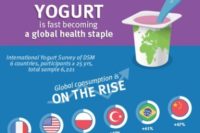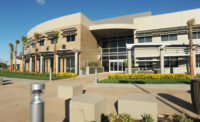
On a per-capita basis, specialty cheese consumption has grown five times faster than total cheese consumption during the past ten years.
The study, "U.S. Cheese Consumption Trends, 1994-2003," analyzed production, consumption, and import data published by the U.S. Department of Agriculture. ACNeilsen, Information Resources Inc., and proprietary sales data were also analyzed. The analysis was then fortified by interviews with numerous participants in the business - cheesemakers, distributors, brokers, retailers and end users.
Between 1994 and 2003, total U.S. cheese consumption grew from 7.0 billion lbs to 8.8 billion lbs, a 26% increase. During the same time frame, specialty cheese consumption increased from 420 million lbs to 815 million lbs, a 94% jump.
Specialty cheese, for purposes of the study, were defined as "natural cheese that commands a higher price than a commodity cheese because of its high quality, limited production, value-added production or packaging techniques and/or value-added ingredients. Cheeses such as Cheddar, Jack and Swiss aged more than 12 months were also counted among the specialty cheeses.
Specialty cheeses accounted for 6% of total cheese consumption in 1994; 9% by 2003. The study estimates that per-capita consumption of specialty cheese totaled about 1.6 lbs in 1994; 2.8 lbs in 2003.
"It's not just that Americans are eating more cheese, but that our tastes are changing," noted Nancy Fletcher, CMAB's v.p. of communications. She added, "Americans want high quality, flavorful cheese of all types and at all price levels, and American producers are delivering on that today."
The study drove that point home. While total consumption increased by 1.8 billion lbs during the decade, imports of cheese grew by only 145 million lbs.
The study identified more than 350 specialty, artisan and farmstead cheesemakers from across the country. The number of such plants in 1994 could not be established, but an analysis indicated that many of the current cheesemakers had been in business less than 10 years.
About two-thirds of the specialty makers are located in either California, Wisconsin or New England. In California, for example, the number of cheese varieties being produced has grown from 70 to more than 250.
Cheesemakers are clearly responding to more sophisticated palettes. "Make what they want and they will buy it" could be the mantra of the U.S. cheese business.

